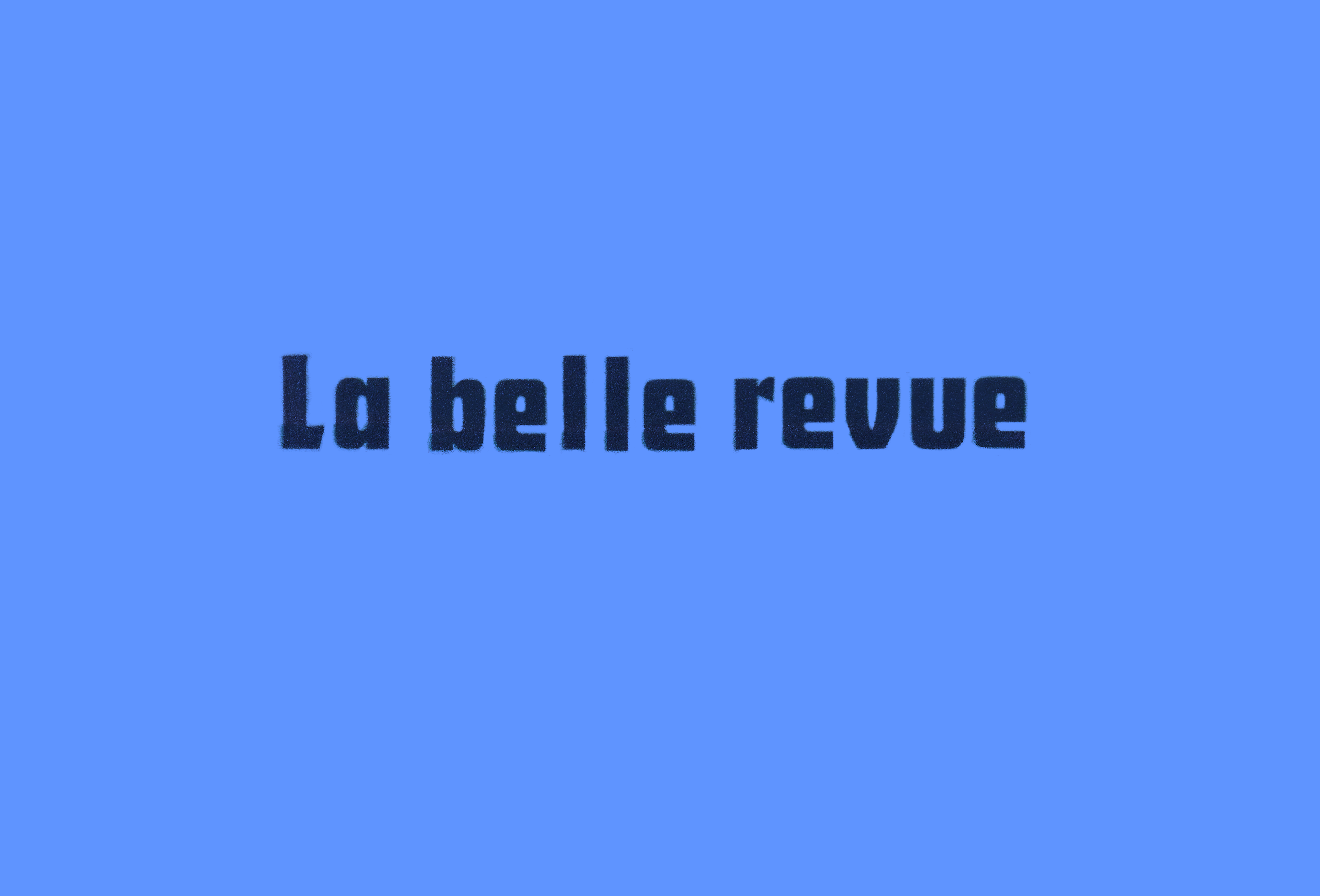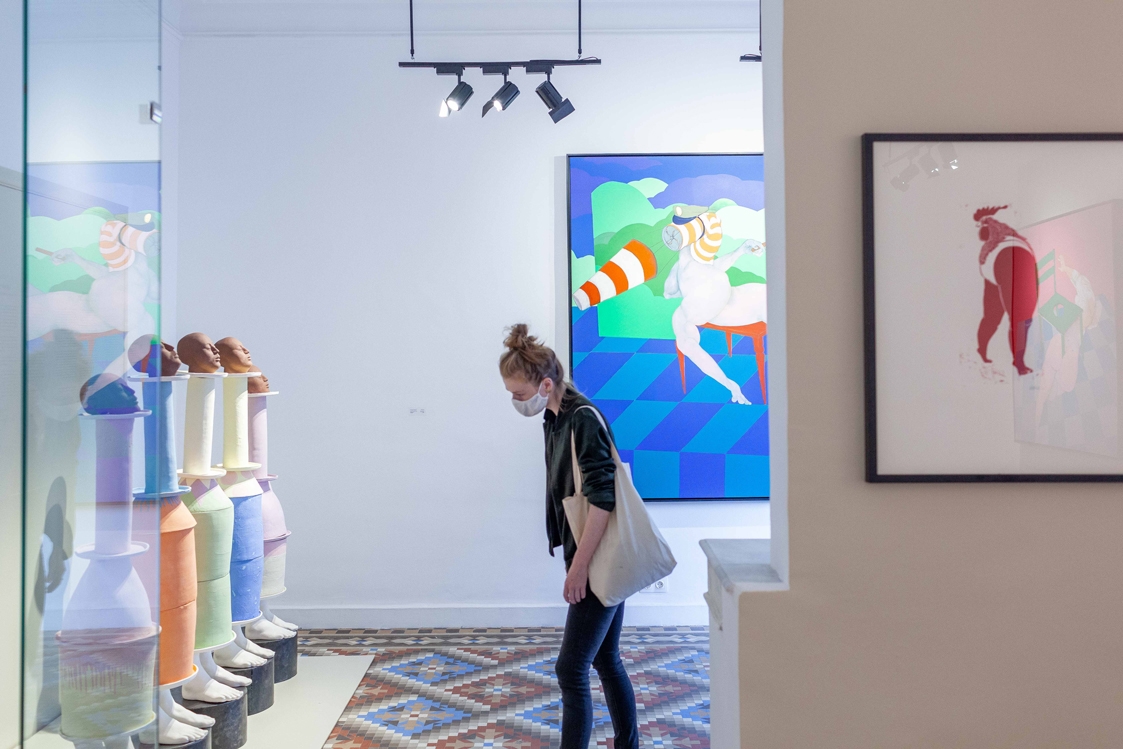Operating in a context such as Algeria – and particularly for the professions gravitating around art and culture – has become, by necessity, a project for life.1 The fact of “staying” and establishing oneself there is not some kind of sacrifice, but a choice and a search for meaning.
In order to contextualise and better understand the dynamics of the Algerian artistic and cultural sector, it is important to briefly reflect on the period of the “dark decade” whose repercussions continue to be felt, even thirty years later.
The frontlines affected during this period undeniably remain the intellectual sphere and that of Algerian artists. Most of the men and women who survived countless death threats fled the country by necessity and to ensure their survival. Nevertheless, others remain all the same, although this has not lessened the extent of the brain drain.
Beyond this dark period that has considerably amputated the sector, another reality is to be taken into consideration: the constant challenges and adjustments, on the economic, political and societal levels, interfering and weakening the establishment of solid and autonomous institutions, which perpetuate their activities over the long term.
As an example, over the last three years, five ministers came and went at the head of the Ministry of Culture and Arts, a simple fact that naturally brings us to this rhetorical question: how can the long-term survival of a sector be envisaged when even its leadership is disjointed?
In the absence of any political will to promote the development of an ecosystem enabling an umbrella structure to be established, either intentionally or out of negligence the Algerian cultural sector eventually became constituted by “figures” who, over time, were organised into collectives, independent and private entities, or continued to operate as individuals. These same stakeholders eventually built up an alternative ecosystem that manages more or less to maintain itself, within a rather critical state of equilibrium. This operating mode also confers to it the bonus capability of updating the mechanisms that govern it in an agile and creative way, to ensure the continuity of its actions.
To cite just a few examples: Artissimo, mainly focusing on arts training and cultural distribution, and which recently became a creative hub; La Chambre Claire, an independent publishing house specialising in photography books; Collective 220, which defines itself as a collective offering photographic narratives firmly rooted in various dispersed regions of the Algerian territory, telling stories about people, cities, and spaces.
There is also the Collectif Cinéma Mémoire, which has worked in the field of film since 2007, dedicated to professional training and cultural distribution. More recently, the Tilawin project was born. Initiated by Liasmin Fodil, Tilawin proposes a free mentorship programme, to guide emerging photographers from Algeria and its diaspora.
Many others could be counted for their not inconsiderable contributions. However, another observation needs to be made: that of the cruel lack of sites of dissemination and display. In the absence of statistics and official figures, the assessment remains superficial.
The work of rhizome falls precisely within the context of this dynamic.
Founded in 2017, the entity has continually evolved as a non-physical space, up until the month of November 2020, finally resulting in the materialised form of the Algiers space we know today, located in the heart of the downtown area, on Didouche Mourad Street.
The rhizome model, as a cultural entity, refers to the rhizomorphic thought developed by Gilles Deleuze and Félix Guattari. A concept that grasps multiplicities, in opposition to the hierarchical and arborescent conception of knowledge. This model conceives of culture and the arts as a wide range of influences and fosters a nomadic system of growth and distribution, in which the elements that compose it can mutually influence one another at any time, irrespective of their position[n1] .
The name refers both to the nomadic and arborescent functioning of the (independent) Algerian cultural and artistic sector, but also the transversality of its actions. These principles are adopted within the organisation itself, whether it be in a structural or operational way. At the crossroads of an independent artistic organisation and a commercial gallery, rhizome operates at the point of intersection of these two models, adopting a hybrid form in its approach to ensuring its own survival.
Dedicated to the visual arts, rhizome’s work is deployed through two main elements. First, there is the gallery, which focuses on the representation, support, and promotion of emerging contemporary artists, with special attention paid to Algerian artists and those of the diaspora – the goal is both to bridge an omnipresent generational divide, especially between the artists of the diaspora and those of the young generation, but also to encourage mutual exchange and learning between them. Secondly, beyond representation, rhizome also works on the control of works of art, notably for Lydio Ourahmane’s Barzakh exhibition presented at the Kunsthalle Basel, then at Triangle-Astérides (Marseille), and soon to be shown at the S.M.A.K Museum of Contemporary Art, in Ghent.
The ambition of the commercial aspect and, beyond this, the goals established, is part of the approach, as defined by Koyo Kouoh in her conference Institution Building as Curatorial Practice, which considers that the establishment of cultural institutions is also based on a curatorial approach. In other words, the idea is to foster the development of a benevolent environment enabling roots to be firmly established – here, that of rhizome – to guarantee not only financial autonomy, but also the ongoing integrity of an intellectual and editorial line. This is a very important factor for disengaging from the communal constraint of the cultural institutions, whose operation depends on subsidies and the imperative of constantly responding to calls for projects in order to secure the necessary funds.
It is a fragile position and a constant, frantic race, to avoid putting the key in the door – but at what cost? Given that most funding entities set specific criteria corresponding to very precise agendas. It is clearly a legitimate position on the part of the backers, however this often represents a dilemma for the eligible entities during the development of their proposals, between the adaptation of the submissions to respond to the backers’ request and tailored projects designed to take advantage of the funds in question.
While we’re on the subject of the action on the environment in which rhizome operates[n2] , the fact of establishing itself in the heart of Algiers emerged as self-evident at the time of location scouting, given that Khaled Bouzidi and myself, the founders, born and raised in the city, have worked on questions relative to art and the reappropriation of public space and the conversion of abandoned sites into local cultural spaces. By exploring these subjects through long periods of research in the field, undertaken between 2012 and 2017, as part of the work of the Trans-Cultural Dialogues Platform, two major projects took shape, which were developed and devised as experimental laboratories on the scale of the city: DJART (2014) and EL MEDREB (2016).
Capitalising on this knowledge has influenced the design of programmes presented by rhizome, since it had first identified the tangible needs of the sector, with the need to act swiftly and with a targeted approach within the visual arts. This identification was later consolidated by another field investigation, directly targeting professionals of art and culture, as well as art school students in Algiers and at regional schools, throughout a large part of the country.
Rhizome’s main proposals were thus organised around training, cultural mediation, public programming and the offer of a residency space and workshop for artists.
At first, the training courses allowed the skills of those keen to attain a professional level to be reinforced or redirected towards one of the careers in art and culture, such as art critic, cultural mediator, exhibition curator, coordinator, etc. The selection process of participants occurs after a call for applications and does not require any special prior knowledge about the course subjects, but nevertheless strong motivation to put the acquired notions into practice must be demonstrated. This programme is currently run in partnership with the AICA France (International Association of Art Critics).
As for cultural mediation, it accompanies the public programming and aims to foster loyalty among audiences, particularly the involvement of local residents in rhizome’s activities, focusing on the organisation’s vision, providing a forum for suggestions and negotiations, in which disagreement is not taboo, but a springboard for reaching consensus, federating, and reconciling pluralities. It was through questions of society, politics, and aesthetics that this discussion began. For instance, the inaugural exhibition, by Bardi (Mehdi Djelil), entitled Stasis in reference to the general stasis that the country experienced post-Hirak, or the photo exhibition Untold by Abdo Shanan and Sonia Merabet, which lifted the veil on the taboo of the psychological repercussions relating to violence done to women, in a society that holds its tongue, particularly regarding anything that is not visible. Photographic series have also questioned the aesthetic of violence, which has become common to the point of banality.
Taking stock of the first year of activity, the site has hosted some eight thousand visitors, in this Haussmannian apartment “2nd floor, door on the right”, despite the overall conditions in the country, which resemble an absurd vaudeville.
Amid shortages, political crises, COVID-19, droughts and forest fires, the response of the Algerian public has nevertheless been positive. A form of approval, recognition, and validation of the pertinence of what rhizome proposes, strengthening our desire to continue, in spite of everything, with a task that still remains long and arduous, within a context whose closest definition would be “joyful schizophrenia”.







